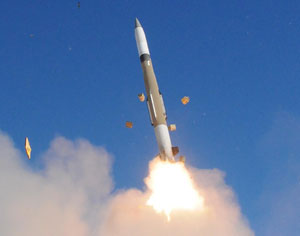 The Department of Defense has a long and unhappy history of spending tens of billions of dollars bringing weapons programs well along the path to completion only to terminate them in the 11th hour. Remember the A-12 attack aircraft, Comanche helicopter, Future Combat System, Armed Reconnaissance Helicopter, CG(X) cruiser, VXX Presidential Helicopter and Crusader howitzer.
The Department of Defense has a long and unhappy history of spending tens of billions of dollars bringing weapons programs well along the path to completion only to terminate them in the 11th hour. Remember the A-12 attack aircraft, Comanche helicopter, Future Combat System, Armed Reconnaissance Helicopter, CG(X) cruiser, VXX Presidential Helicopter and Crusader howitzer.
Often the military service and contractors involved fail to salvage any of the advanced technologies or manufacturing capabilities developed as part of the program. If the political stars are properly aligned, the Pentagon may be pressured into producing a small number of extremely capable but controversial platforms at very high unit prices: Seawolf nuclear submarine, B-2 bomber, F-22 fighter and Zumwalt DDG-1000 destroyer.
In an era of austere budgets and renewed calls for acquisition reform, one might think that DoD would make a concerted effort to admit to its dysfunctional behaviors and reconsider some of its near-term acquisition decisions. Chief among these is the decision by the U.S. Army to terminate the Medium Extended Air Defense System. MEADS was intended to be the next-generation in ground-mobile air and missile defense replacing a wide range of Western systems. MEADS had many attractive features, it was a multinational program — Germany and Italy were co-developers and provided nearly half the funding, it was highly mobile, and the radar and battle management system provided 360-degree coverage against fast moving aircraft and cruise missiles.
Just this week, MEADS demonstrated the unprecedented capability to track, intercept and destroy simultaneously two targets approaching from opposite directions. One target represented an air-breathing threat and the other a short-range ballistic missile. Every element of the system worked flawlessly: the 360-degree MEADS Surveillance Radar, a networked MEADS battle manager, two lightweight launchers firing PAC-3 Missile Segment Enhancement Missiles and a 360-degree MEADS Multifunction Fire Control Radar. This was the third successful test in a row for the MEADS system.
At a time when the Army is trying to become more expeditionary, agile, lighter and responsive to new threats, the decision to cancel MEADS, a system that supports all of these objectives, seems odd. The Army has promised to identify component technologies that could be harvested from MEADS to enhance existing air and missile defense systems. Unfortunately, this means the Army will still be left with a ground-based air and missile defense capability less responsive and mobile than MEADS.
Critics have complained that the multinational character of MEADS increased complexity and cost. But the same could be said about the international F-35 Joint Strike Fighter program which has eight co-development partners. Yet, DoD has stressed international participation as one of the positive features of the JSF program. Germany and Italy would like to keep the MEADS program going, adding new participants. Poland recently expressed strong interest in becoming a MEADS principal. Warsaw would have to put some money to the program for which it would expect to receive significant industrial participation. If other nations can be enticed to participate, perhaps DoD should tell the Army to give MEADS a second look.
 Author: Daniel Goure, Ph.D.
Author: Daniel Goure, Ph.D.
Dr. Goure is a Vice President with the Lexington Institute, a nonprofit public-policy research organization headquartered in Arlington, Virginia. He is involved in a wide range of issues as part of the institute’s national security program.

















